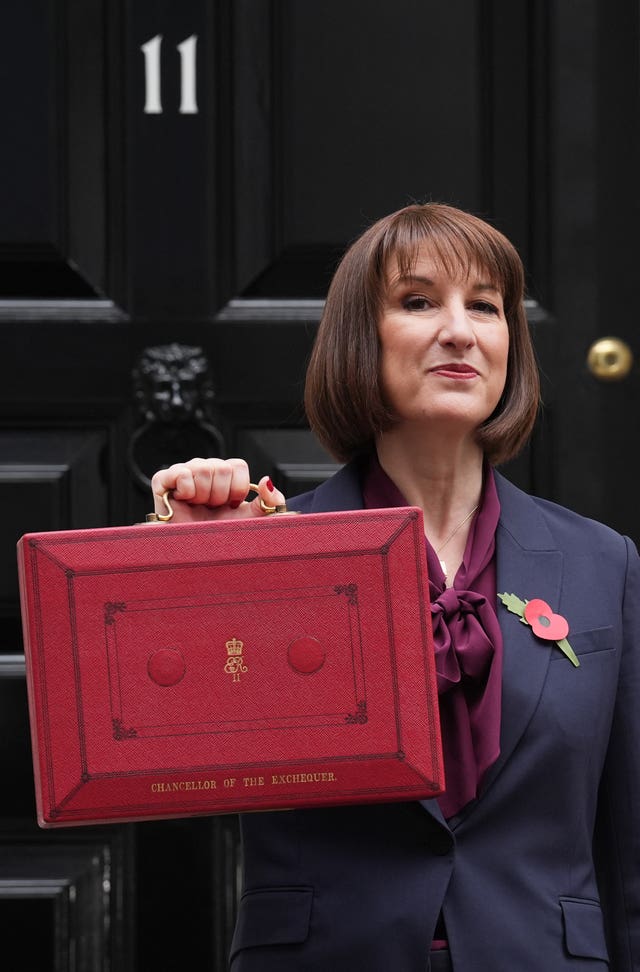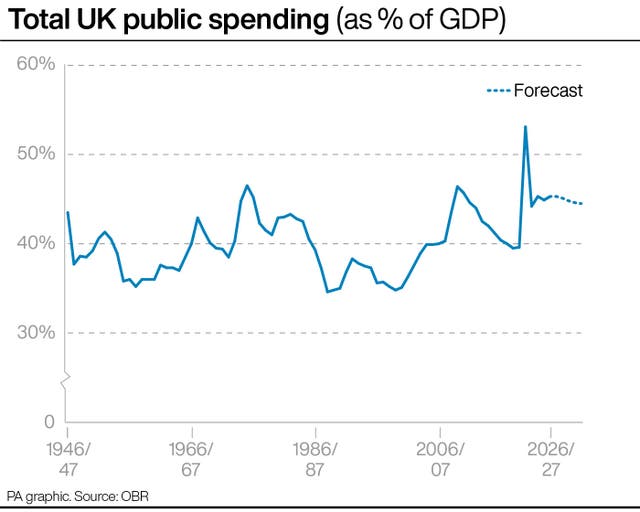The yield — or interest rate — on 10-year Treasury notes, a gauge of the cost of government borrowing, hit 4.568 percent on Thursday afternoon, the highest point since August 2023.
The yield on UK government bonds, also known as gilts, moves inversely with prices.
They had already risen on Wednesday after Chancellor Rachel Reeves’ Autumn Budget.

Mrs Reeves announced almost £70bn of extra spending each year, funded by business-focused tax increases and extra borrowing.
The Office for Budget Responsibility (OBR) called it “one of the biggest fiscal loosenings of any fiscal event in decades”.
Analysts said the move in bonds was a sign that markets were reacting negatively to rising costs.

Kathleen Brooks, an analyst at trading firm XTB, said the move showed the budget was “not well received” by markets.
She said: “This is yet another sign that the Chancellor has overestimated the market’s willingness to absorb more UK government debt issuance.”
As well as the rise in gold yields, the pound also weakened against the dollar, falling to $1.2856 after 3pm.
Kyle Chapman, an analyst at trading firm Ballinger Group, said the fall in the pound and rise in gold yields showed the market had decided Labor had “overdone” its borrowing and spending plans.
Sterling also lost more than 1% against the euro, although Chris Turner, global head of markets at ING, who also led the UK survey, said the move was “nothing like the stress seen in Liz Truss’s budget” when fell by 6%.
“However, Sterling is reacting to Gilt supply risk today,” he added.
The FTSE 100 was down 0.87% on Thursday afternoon after closing on Wednesday at its lowest point since August.
Matt Britzman, an analyst at investment firm Hargreaves Lansdown, said yields would be “closely watched” after the budget was passed.
He said investors were “reassessing where UK interest rates could go, given that the growth investment plan is likely to add inflationary pressure to the economy”.
Downing Street will not be drawn on the market’s reaction to Ms Reeves’ budget.
“It is a matter of government policy not to comment on market fluctuations,” the prime minister’s official spokeswoman said.
Against a largely unchanged economic and fiscal backdrop, today’s budget provides a large, sustained increase in spending, taxes and borrowing; a temporary boost to the economy; and a new set of fiscal rules.
Richard Hughes explains five things you need to know about our forecast pic.twitter.com/mjsCWPNuvj
— Office for Budget Responsibility (@OBR_UK) October 30, 2024
The OBR’s latest projections on spending plans also show inflation will remain above the Bank of England’s 2% target until 2029.
This means that inflation is expected to average 2.5% this year and 2.6% next year.
The official forecaster said inflation would then ease, assuming “the Bank of England acts” to help reach the target rate.
The Bank of England has used higher interest rates in recent years to help reduce UK inflation after it jumped to 11.1% in 2022.
The interest rate, which helps dictate mortgage rates, is currently 5% after it was last cut in August by the Bank’s policymakers.
